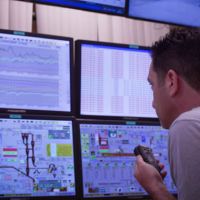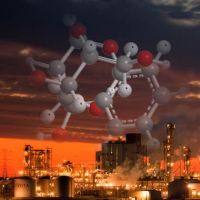Pipeline Simulation
GB Simulation Technology has been pioneering the field of Pipeline Simulation Modelling for the oil and gas industry since 1984. Advanced modelling and simulation in Pipelines cover a wide domain in process engineering, fluid transportation, mechanics of process equipment and safety devices. Emphasis is made on advanced and innovative modelling approaches and numerical strategies used for the solution.
We have kept pace with the growing new creations in the ever changing industries over the years. We recognize the value that oil and gas pipelines and gas distribution networks can receive from the use of advanced pipeline management applications throughout their operations. We deliver the simulators built on most state-of-the-art technology for designing a completely new pipeline network that run at optimal efficiency or expanding an existing one.
The simulator is a valuable tool for conducting what-if simulations, monitoring ongoing operational strategies for an entire system, and one that optimises the operations to maintain an efficient plan to manage the daily movement of products.
A good simulator ensures the pipeline is operating safely and is working to prevent and minimize commodity waste.
Pipeline operators employ a simulator as tool to improve their pipeline controlling tasks through training on realistic control room simulations. The training simulators behave as they would in the field ensuring that those who undergo training are prepared for regular operation and any abnormal operating conditions.
Pipeline simulators developed by GB Simulation Technology have been used for the design, modifications, operation, training and controlling country-wide ethylene distribution networks.
Areas of Expertise
Steady State Simulation
Our Pipeline Simulator models the industry’s most comprehensive steady-state pipeline operations. The pipe flow rarely attains true steady-state due to fluctuations in supply and conditions but the steady-state simulations provide flow assurance workflows for front-end system design, line modifications and production operations. A simulator is supportive from conceptual build to completion, as well as to envisage the impact that any new or modifications to design configuration or operational decision may have on a system prior to implementation. Accomplishment of the flow assurance capabilities enable engineers to sizing of facilities, pipelines, setting up operation control parameters so as to ensure safe and effective fluid transport. The steady-state applications using our pipeline simulator accurately model essentially every operational requirement of simple to complex liquid, varying multi-phases from liquid, vapour, dense, saturated, steam and natural gas pipeline networks.
Transient Simulation
The pipe flow is of dynamic nature and the transient simulator models all flow process components, flow, and pressure, temperature and fluid properties as time dependent variables. Transient state implies the effect of time over the operational behaviour of an industrial facility. Among typical applications of transient analysis of a pipeline would be line pigging, start-up sequence, supply and demand variations, line packing studies, compressor or process unit failure and a safety shut down. Pipeline dynamics are described by a finite-volume thermo-hydraulic compressible flow model which allows evaluation of the operation changes due to variations of flow, pressure, temperature and the fluid thermophysical properties. GB Pipeline Simulator transient analysis is an extension of the steady-state simulator and the transient model imposes time dependant operation and constraints upon the relevant process facilities and the pipeline. Transient simulation is also used for predictive and look ahead analysis which enables forward views into the potential future of the operations. Such predictions can be invaluable in helping to guide the ongoing daily decisions.
Pipeline Optimization
Successful pipeline operations is about achieving the profit optimality by the correct management of the capacity, inventory, and storage while avoiding losses and minimizing the operational costs. Operations are faced with the problem of locating a suitable answer in many challenging positions. A typical situation is the minimization of operational cost of the compressors by optimally scheduling them to minimize fuel costs. Another is the achievement of set profit levels by a proper line pack management while leveraging the pipeline’s total capacity to meet the primary customer commitments. Steady-state and transient simulation and optimization software together is a necessary composite tool for maintaining the pipeline at the optimal operation level. In some cases, an optimum mode of operation can be selected from decisions based on case studies. The operational cost optimization solutions may require pipeline simulation software that incorporates a cost optimization module. GBST Pipeline Simulator provides accurate and reliable answers to a wide range of steady-state and transient analysis applications which can be accommodated in a suitable optimization scheme.
Leak Detection
Pipeline leaks occur as the result of material fatigue and are often found on longitudinal welds. Stress corrosion is another possible cause. Cracks can also be caused by hydrogen diffusing into the metal grid causing the pipe material becoming brittle and prone to early failure. Material manufacturing errors can also cause leaks. Leaks can also occur when an external force acts from the outside. It is a necessity that pipelines are effectively monitored in a timely fashion so as to accurately detect pipeline leakages and their possible location as well as the magnitude of the leakage. The real time transient modelling (RTTM) system provides the most sensitive and reliable method for detecting the leak and its localization. RTTM method can predict the size and location of leaks by comparing the measured data for a segment of pipeline with the predicted modelled conditions, which needs an accurate transient model to calculate in real time the profiles for flow, pressure, and temperature or density along the pipeline. The Extended Real-Time Transient Model (E-RTTM) is an extension of RTTM in which the RTTM is combined with advance statistical techniques to analyse the flow rate, pressure and temperature measurements of a pipeline. The main objective of this system is to minimize the rate of false alarm. GBST Pipeline Simulator provides accurate profiles for flow, pressure and temperature for use in a RTTM system.
What-If Simulation
Pipeline operators need know in advance the consequences of operator-initiated actions complying with production and demand alterations, flow path variations, compressor switch settings. What-if simulations are conducted before making adjustments to accommodate changing circumstances so as to preserve priorities related to line operations. In order to be able to evaluate beforehand the impact of an initiated action so as to plan optimal strategies to maintain the pipeline operation goals, decision makers need reliable predictive systems. GBST Pipeline Simulator provides a reliable What-If analyser to inspect the behaviour of a complex system under some given hypotheses called scenarios.
 Advanced modelling and simulation in pipelines cover a wide domain in process engineering, fluid transportation, mechanics of process equipment and safety devices. Innovative simulators built on most state-of-the-art technology help designing a completely new pipeline network that runs at optimal efficiency or expanding an existing one.
Advanced modelling and simulation in pipelines cover a wide domain in process engineering, fluid transportation, mechanics of process equipment and safety devices. Innovative simulators built on most state-of-the-art technology help designing a completely new pipeline network that runs at optimal efficiency or expanding an existing one.
 Plant safety requires items of plant and equipment accomplish safety-critical features which need to be realized by accurate design procedures and installation and during maintenance carried out as part of a planned programme or emergency work. Quantitative analysis of the rapid depressurisation of vessels or pipelines is an essential task during the design and safety analysis of Oil & Gas facilities and other high-pressure installations.
Plant safety requires items of plant and equipment accomplish safety-critical features which need to be realized by accurate design procedures and installation and during maintenance carried out as part of a planned programme or emergency work. Quantitative analysis of the rapid depressurisation of vessels or pipelines is an essential task during the design and safety analysis of Oil & Gas facilities and other high-pressure installations.
 The simulator takes an active participation in the pipeline operations in ensuring safety and economy. Steady-state simulations provide flow assurance workflows for front-end system design, line modifications and production operations. Transient state implies the effect of time over the operational behaviour of an industrial facility. Successful pipeline operations is achieving the profit optimality by the correct management of the capacity, inventory, and storage while avoiding losses and minimizing the operational cost.
The simulator takes an active participation in the pipeline operations in ensuring safety and economy. Steady-state simulations provide flow assurance workflows for front-end system design, line modifications and production operations. Transient state implies the effect of time over the operational behaviour of an industrial facility. Successful pipeline operations is achieving the profit optimality by the correct management of the capacity, inventory, and storage while avoiding losses and minimizing the operational cost.
 A necessary component of plant’s safety management is the training of operating personnel. Participating operating personnel could experience the behaviour of pipeline under widely different operating conditions, the practical significance of operating limits and the manipulation of operating parameters for the optimal results. ‘What if’ querying, investigating safe operating limits, process optimization, planning and scheduling can be experienced from offline simulation.
A necessary component of plant’s safety management is the training of operating personnel. Participating operating personnel could experience the behaviour of pipeline under widely different operating conditions, the practical significance of operating limits and the manipulation of operating parameters for the optimal results. ‘What if’ querying, investigating safe operating limits, process optimization, planning and scheduling can be experienced from offline simulation.
 Fluid thermophysical properties are specific to the operation and in most industrial applications the thermophysical software is developed and validated separately in accordance with the client specifications before the properties are incorporated with the simulation software. GB Simulation Technology simulation software can also be integrated with most externally available thermophysical property packages. Some of the GB Simulation Technology thermophysical property software has been released as standalone programs.
Fluid thermophysical properties are specific to the operation and in most industrial applications the thermophysical software is developed and validated separately in accordance with the client specifications before the properties are incorporated with the simulation software. GB Simulation Technology simulation software can also be integrated with most externally available thermophysical property packages. Some of the GB Simulation Technology thermophysical property software has been released as standalone programs.

